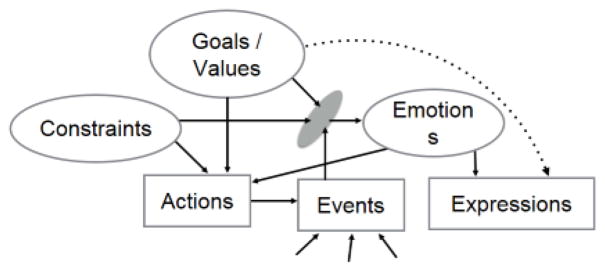Figure 1.
A box and arrow simplification of part of the intuitive causal theory of other minds. Ovals denote unobservable, internal states; rectangles are externally observable. Constraints include appraisals of the costs of actions, what is possible, what is controllable, and other beliefs. Goals and values include both local goals and intentions, but also long term values like relationships and status, and therefore can directly influence expressions. At the core of the model is the inferred “appraisal” process: interpreting external events through the lens of their relevance for one’s goals, beliefs, costs, and so on. Inferred appraisals cause emotions (internal states) which cause expressions (observable behaviors). An observer can therefore predict emotions based on inferred appraisals (following the causal arrows) or from the observed expressions (inverse of the causal arrows). Compare similar models in [14,18**,19].

